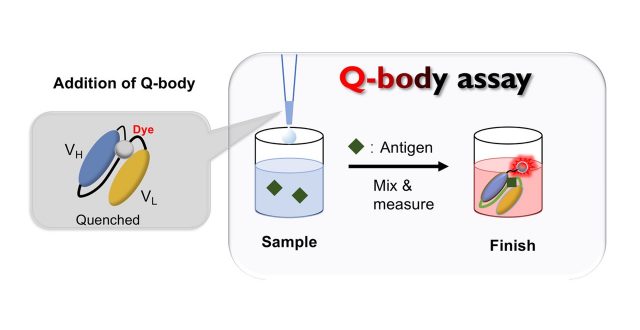
蛍光免疫センサーQ-bodyの最近の発展
WRHIからのお知らせ おすすめ
化学生命科学研究所 上田宏教授とJinhua Dong特任教授の共著総説論文
“Recent Advances in Quenchbody, a Fluorescent Immunosensor”
が、Sensors (Basel) に掲載されました。(DOI: 10.3390/s21041223 )
詳しくはこちら
<Abstract>
The detection of viruses, disease biomarkers, physiologically active substances, drugs, and chemicals is of great significance in many areas of our lives. Immunodetection technology is based on the specificity and affinity of antigen–antibody reactions. Compared with other analytical methods such as liquid chromatography coupled with mass spectrometry, which requires a large and expensive instrument, immunodetection has the advantages of simplicity and good selectivity and is thus widely used in disease diagnosis and food/environmental monitoring. Quenchbody (Q-body), a new type of fluorescent immunosensor, is an antibody fragment labeled with fluorescent dyes. When the Q-body binds to its antigen, the fluorescence intensity increases. The detection of antigens by changes in fluorescence intensity is simple, easy to operate, and highly sensitive. This review comprehensively discusses the principle, construction, application, and current progress related to Q-bodies.
